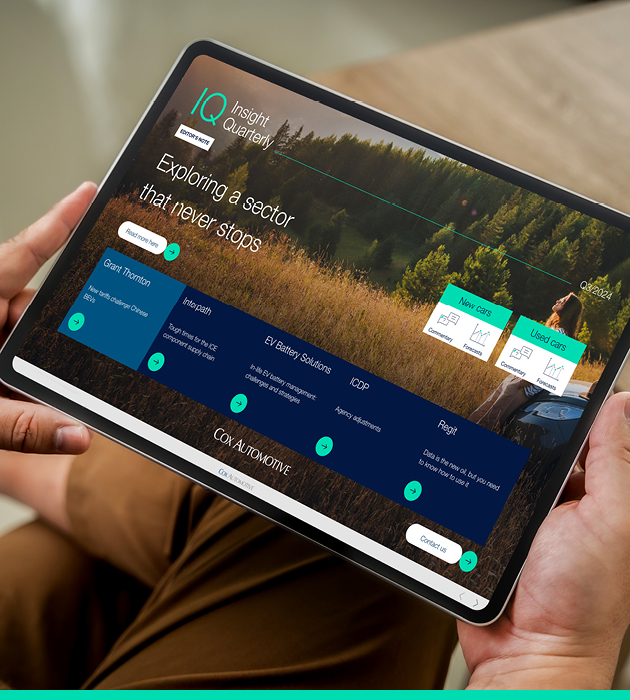I discussed in my previous blog how a number of societal, legislative, economic and technological changes are bringing about a renaissance in the ease in which we move people and goods from A to B
Mobility isn’t just the future, it’s already here. New retail models, subscription, car sharing and ride-hailing, to name just a few services, are fundamentally changing our relationship with vehicles from ownership to usership. The mobility market is estimated to grow from €2 trillion to €5 trillion by the end of the decade.
Inevitably, all of this disruption is bringing about change throughout the vehicle lifecycle and the ecosystem that supports it. From factory gate to the scrap yard, the structures, processes and behaviours established over decades are facing reinvention.
The changing owner, defleet and remarketing cycle
For decades, the typical vehicle lifecycle has been reliably predictable, and that lifecycle has established a robust vehicle services industry (in which Cox Automotive is now a key player). New vehicles have traditionally transitioned from their first owner (increasingly becoming first user) and into the used market via an established and highly effective defleet and remarketing process.
With the exception of rental fleet disposals, vehicles entering this cycle have typically been one-owner, under three-year-old models. The used market has been powered by this cycle, built on a reliably steady feed of young vehicles with a predictable history and condition.
Three things are happening today that are changing this process.
First, the rise of subscription models backed by the world’s largest manufacturers and fleets means we are now seeing more and more vehicles that have had a single owner, but many users.
Second, these vehicles are requiring more interventions than before during their lifecycles. Each new user expects a clean, damage-free, as-new product, and these interventions might take place outside of the traditional dealer network.
Third, asset owners are keeping vehicles for longer than the traditional three-year cycle. Manufacturers are increasingly seeking to retain ownership of the vehicles they build and to drive sustainable revenue streams for longer. Disposal will come only once that vehicle’s revenue potential has been maximised.
These changes are causing disruption in the systems and processes that have underpinned the vehicle lifecycle for decades. The predictability of stock flow that once defined the used car market is steadily changing. Each vehicle will need more interventions than ever before, and this puts more responsibility on vehicle service providers to ensure that they are well equipped to scale their services as the mobility market grows.
The automotive retail revolution
At the same time we’re seeing massive changes in how people are viewing vehicle ownership, we’re also seeing a revolution in automotive retail.
The days of buying new and used cars only from physical dealerships are behind us.
Incumbent manufacturers have established direct to consumer platforms that either bypass the traditional dealer altogether or use the dealer network to help facilitate physical elements of a transaction under an agency model framework.
Some new-form manufacturers are doing away with dealer networks altogether and proving that it’s possible to establish a foothold in a sector that has remained otherwise unchanged for a long time.
This shift has been enabled by a consumer base that is increasingly comfortable with making big ticket purchases online. The Cox Automotive Car Buyer Financing Journey Study, published by our US team, reported that three-quarters of consumers are open to buying their next car fully online.
It’s a complex and fundamental shift, the likes of which we’ve never seen before in this sector. And it’s creating a fight for ownership of the customers. Manufacturers are no longer happy to surrender this potential long-term value to a third party.
How will the used car market be impacted?
As manufacturers and fleet owners hold on to vehicles for longer in order to maximise the revenue potential of every asset, inevitably this will have an impact on the used car industry three, four, or even five years down the line.
The new and used markets share a symbiotic relationship, so any changes to how new vehicles are retailed and used will affect the used market; and let’s not forget, the used market is already reeling from the pandemic, parts shortage and the war in Ukraine.
Now more than ever, a healthy used car market is vital for the overall health of our industry, with the ratio of used vs new sales in Europe being roughly five to one. But what happens when the predictable reliable stream of three-year-old vehicles begins to dry up?
How this all plays out remains to be seen. There will be more change to the vehicle lifecycle in the next five years than in the previous fifty, so we all need to be alert to the change that is happening right now.
Cox Automotive Mobility is the future proof partner of choice for customers exploring and operating new mobility services. From short term rental and vehicle subscription software platforms to electric vehicle solutions and beyond, our mobility portfolio helps our customers flex their operations in this fast-moving landscape and sustainably future proof their businesses.
Click here to learn more.



